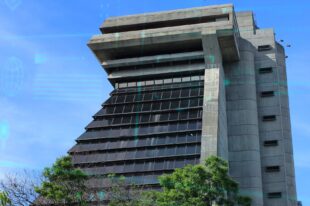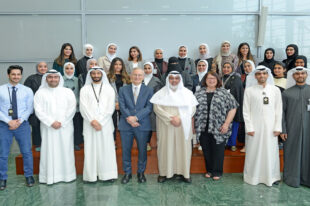Restructuring to Improve Capacity, Ensure Quality

Germany’s Supreme Audit Institution (SAI), also known as the Bundesrechnungshof, implemented a major restructuring project from 2015-2016 that fundamentally reformed its organizational structure and strengthened practices and procedures leading to high quality audits at the federal government level.
When Mr. Kay Scheller, SAI President, initiated the reconfiguration, he opted for a new type of SAI cooperation—a peer consultation. In contrast to a peer review (ISSAI 5600), this consultation was in real time, where three designated SAIs provided professional advice during the restructuring process.

Kay Scheller (President of German SAI), Ellen van Schoten (Netherlands), Viktor Cypris (Austria).
Driver for Reform
Prior to the reformation, the German SAI analyzed its structures, as well as its functions. As a result, the SAI identified the need for action, particularly since the last major federal external audit function reorganization took place nearly 20 years ago.
Initially, the German SAI had nine (and later seven) subordinate regional audit offices. Over the years, the original structure revealed significant weaknesses.
- Regional audit offices performed less audit work of their own accord—tasks stemming from the SAI’s 50 audit units were becoming more frequently assigned directly to regional office staff, which resulted in staff reporting to several superiors.
- Technically, there was no need for the hierarchical levels at the regional audit offices.
- The complex hierarchy made steering audit procedures difficult and led to additional burdens at operational levels.
- At the SAI’s Headquarters, audits were not consistently focused on key policy areas.
- Former structures hampered an effective and flexible response to newly emerging audit issues.
Path Toward Reform
Throughout the streamlining process, Mr. Scheller sought a broad range of professional advice from key internal decision makers as well as three partner SAIs. A project management approach was utilized and arrangements were tailored to the SAI’s specific structures.*
Corporate Governance Unit and Management and General Services department heads jointly spearheaded the project and led a project team composed of staff from both the audit and support divisions.
An advisory steering council that included all Governing Board members (16-member board incorporating the President, Vice-President, and all nine senior audit directors) advised the President on major decisions and milestones.
Externally, the SAI President relied on professional advice provided through peer consultation by the SAIs of Austria, Switzerland and the Netherlands. The advice, drawn from SAI experience and best practices, proved valuable during the reconfiguration design and implementation.
During the 7-month consultation period, peers analyzed and commented on the proposed functional reallocation, the new organizational set-up, project governance and change management.

Reform Achievements
On January 1, 2017, the German SAI officially reorganized. The SAI’s organizational structures have been fully overhauled and realigned.
The autonomous regional offices were transformed into subordinate field offices allowing staff to be directly incorporated into SAI audit units while simultaneously removing hierarchy levels and facilitating better structured career development paths. The hierarchical compression also released resources to be utilized in more effective ways.
Audit divisions are better tailored to major policy areas and fully reflect the federal government structure. Merging associated fields of activity reduced overlapping responsibilities across audit units.
By the end of 2017, one of the SAI’s dependent branch offices was dissolved as a result of the peers’ initiative and recommendation.
The new system has simplified steering and coordinating audit work and has led to improved, focused communication and strengthened leadership functions. The restructuring also enables the SAI to establish project audit units speedily to address emerging and complex public sector areas of activity, such as federal government programs on refugees and asylum seekers.
The reform, designed to generate sustainable benefits, brings new, strategically important responsibilities and roles, and Mr. Scheller has laid the foundation for an internal monitoring mechanism that seeks to continuously achieve efficient and effective structures and processes.
*The German SAI at a Glance
Board Model with Panel Structure and Independent Members
- The President heads the SAI and bears overall responsibility for high quality mission performance.
- The Vice-President deputizes for the President.
- Decisions relating to audit work are generally made by panels of members. As a rule, a panel is made up of two members, i.e. the senior audit director and the audit director.
- The members are civil servants but independent both personally and in respect to performing official duties. Three-member panels may also be formed (where the President or Vice-President also join).
- Key decisions on audit activities are reserved to the Governing Board, the SAI’s supreme decision-making body. The board is composed of 16 members, including the President, Vice-President, and all nine senior audit directors.





